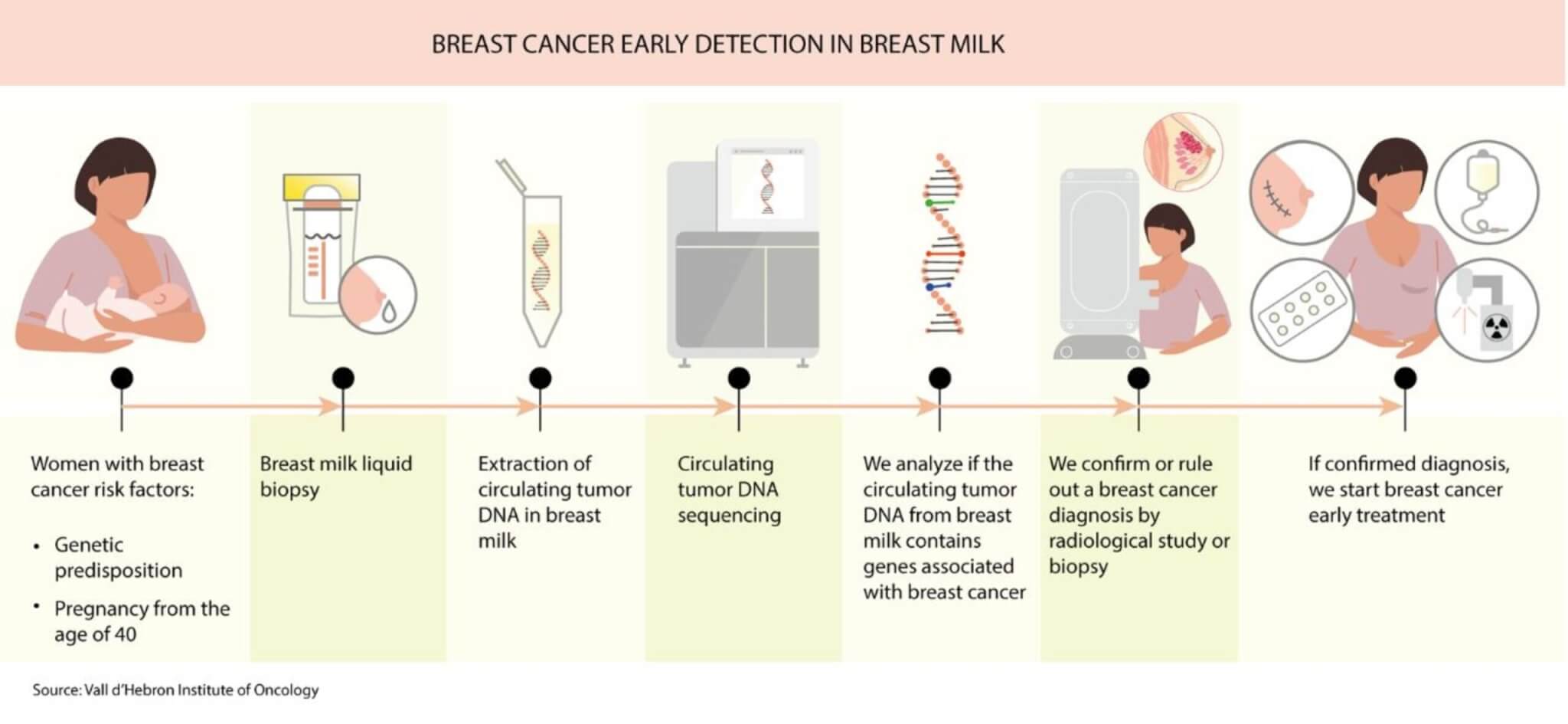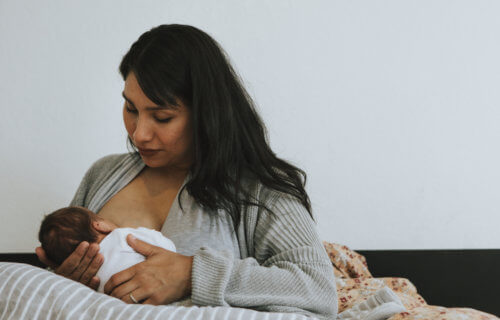BARCELONA, Spain — Can breast milk help lead to early detection of breast cancer? Spanish researchers believe so. Scientists at Vall d’Hebron Institute of Oncology (VHIO) in Barcelona have revealed that breast milk from breast cancer patients contains circulating tumor DNA (ctDNA), which could serve as a new tool for the early diagnosis of breast cancer during the postpartum period.
The study represents the first-ever identification of ctDNA in breast milk.
Breast cancer patients diagnosed during pregnancy or the postpartum period often have worse prognoses as they are typically diagnosed at later stages of the disease. This prompted the need for more effective early detection methods.
In a serendipitous turn of events, the research began when a breast cancer patient who had breastfed her second daughter until shortly before her breast cancer diagnosis brought a frozen sample of her breast milk to VHIO scientists. Despite knowing that breast cancer cannot be transmitted through breast milk, the team decided to analyze the sample for markers that could aid their research. To their surprise, they discovered DNA with the same mutation as the patient’s tumor, even though the breast milk had been frozen over a year before the cancer diagnosis.
Researchers focused on the proximity of breast milk to the tumor and the ease of liquid biopsy as potential advantages for early detection. Liquid biopsy is a technique commonly used in metastatic breast cancer patients to detect or monitor specific mutations. However, it has limited sensitivity for early diagnosis, as it requires a substantial amount of ctDNA in the blood to be effective.
The study collected breast milk and blood samples from breast cancer patients diagnosed during pregnancy or postpartum, as well as from healthy breastfeeding women. Analysis using Next Generation Sequencing (NGS) and Droplet Digital PCR (ddPCR) techniques revealed that ctDNA of tumor origin was present in breast milk, with mutations from the patients’ tumors detected in 13 out of 15 breast milk samples. In contrast, ctDNA was only detected in one blood sample out of the same group.

Researchers developed the VHIO-YWBC gene panel to detect common mutations in breast cancer patients under the age of 45. This panel exhibited a sensitivity of over 70 percent, suggesting its potential as a tool for early diagnosis of breast cancer during the postpartum period.
“Our results open the door to the future use of breast milk as a new source of liquid biopsy for the early detection of breast cancer in the postpartum period using a non-invasive technique,” says Dr. Cristina Saura, head of the VHIO Breast Cancer Group and the Breast Unit at Vall d’Hebron University Hospital, in a media release.
“Before this technique can be put into practice, these results need to be confirmed in a larger number of patients, but the results published to date are encouraging and offer a potential new tool for the early diagnosis of breast cancer in a particularly sensitive population of young women and mothers. The best way to continue to increase the survival and cure of breast cancer patients is to detect it as early as possible and this is a new strategy that could greatly help us in this regard”.
To validate these findings, VHIO researchers plan to conduct non-invasive tests on thousands of women, specifically those who became pregnant at age 40 or older or who carry genetic mutations that increase their breast cancer risk.
“This research was possible thanks to the involvement of breast cancer patients and the various sponsorship initiatives that have supported the project, such as the El Paseíco de la Mama, which allowed us to start this study from scratch,” notes Dr. Saura. “Thanks to them we have been able to generate the preliminary data for the study and then submit the project to competitive calls for grants.”
The study is published in the journal Cancer Discovery.
What are the different types of breast cancer screening tests?
The most common breast cancer screening tests are:
- Mammograms: Mammograms are X-rays of the breast that can find tumors and other changes that may be cancer.
- Breast MRIs: Breast MRIs use magnets and radio waves to create images of the breast. Breast MRIs are more sensitive than mammograms at finding breast cancer, but they can also produce more false positives.
- Clinical breast exams: Clinical breast exams are physical exams of the breasts that are performed by a doctor or other healthcare professional.
Who should get breast cancer screening tests?
All women should talk to their doctor about their individual breast cancer risk and whether they should get breast cancer screening tests. The American Cancer Society recommends that most women start getting mammograms every year at age 40 and continue getting them every year until age 54. Women can switch to getting mammograms every other year after age 54, or they can choose to continue getting them every year.
Women who have a high risk of breast cancer may need to start getting mammograms earlier than age 40 or may need to get additional screening tests, such as breast MRIs. High-risk factors for breast cancer include:
- A strong family history of breast cancer
- Certain genetic mutations, such as BRCA1 and BRCA2
- A history of radiation therapy to the chest
- Dense breasts
- Obesity

